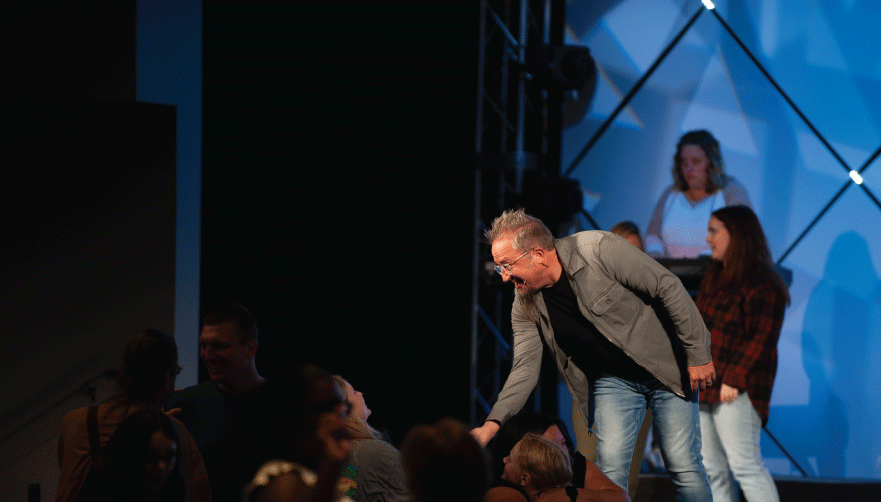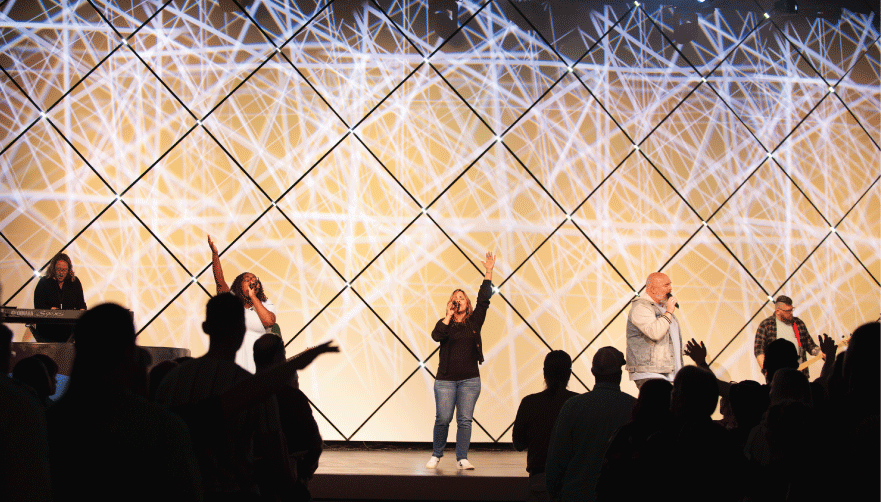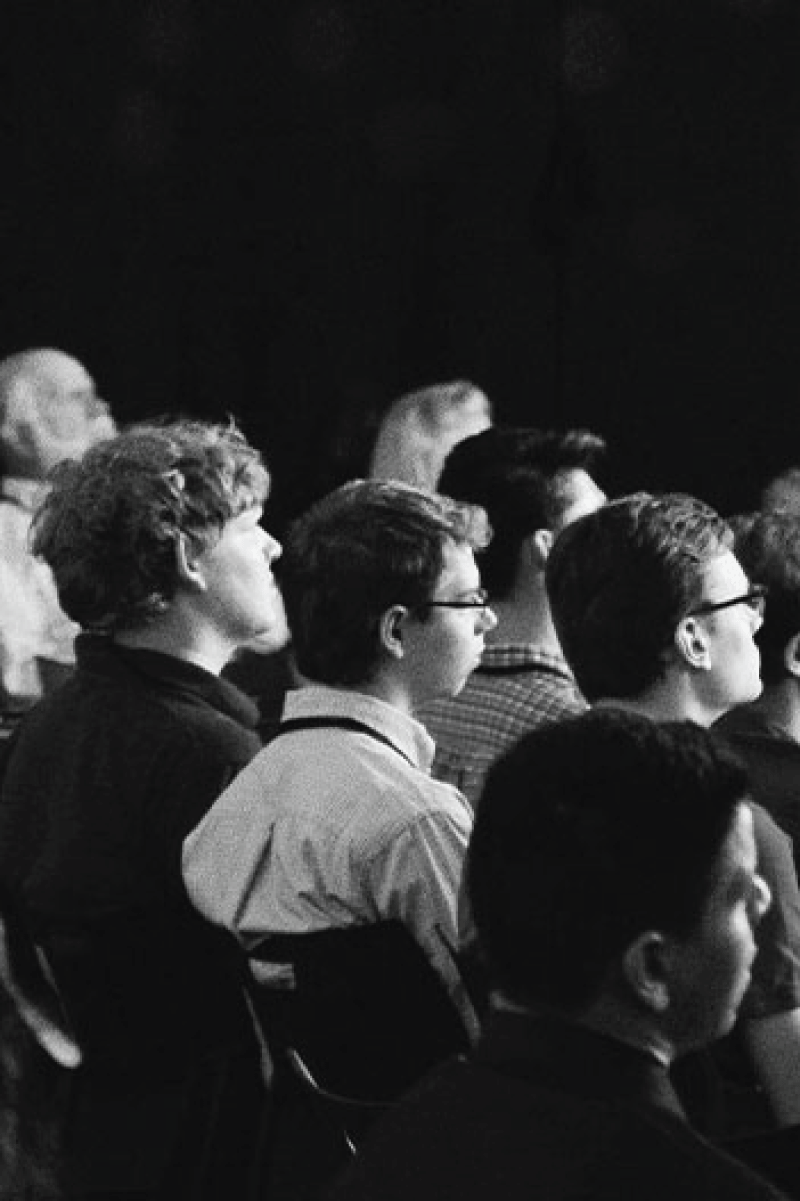
New Technologies to Fortify the Age-Old Church Mission
Including a broadcast campus in Yorktown, Virginia, Waters Edge Church has three conventional in-person campuses and another in a correctional facility. It also streams services to YouTube, Facebook and Instagram, as well as to its own website.
While this may sound like quite a number of different ministry vehicles to wrap your head around, according to Executive Director of Operations TJ Terry, it’s really not. Because the focus of each Waters Edge campus is essentially the same.
“For the last 20 years that focus has been on how to change the way people think about church,” Terry says. “But the specific detail is to change the way people think about God, and to point them toward a life-changing relationship with Jesus.”
With so many tools to accomplish this mission today – and so many options in terms of technological outreach, in general – Campus Pastor sat down with Terry to inquire more deeply.
Tell us about the role that technology is playing in your mission at Waters Edge Church, and how virtual church fits into that
We want attendees to experience significant life change; this is what we push down the path in all environments.
I don’t use the word virtual because it creates a perception that people somehow aren’t real. The online campus is real, not virtual. But we might take a step into virtual at some point and describe it as such.
[Starting out], our physical and online campuses were a bit different [from each other], but we were blessed because in fall 2019 we had the resources to invest in infrastructure changes in our production environment, making it easier to broadcast to our satellite campuses. [But] in fall 2019 we didn’t see a way that helped us get people into the building.
By the second week of March in 2019, things changed [when the pandemic hit], and in less than two weeks [we] switched to online campus. And we thought, “We don’t know where this is going, but this is where God is calling us today. “
By week two, we had over 5,000 live viewers. We spent the first two weeks on one platform, then moved to 2-3, and now 3-6 at the 7,000 range, [and we stayed there] even after the doors opened back up.
In 2021, for the first time, we as an organization started viewing ourselves as a hybrid church. That was important for us, because oftentimes the in-person versus the online [seem to be] fighting one another at many churches, where one is pulling from the other.
But we’re not “either/or,” we’re “and” – we fight for creating the “and” and the best in-person and online [experiences] for everyone that God brings to us, whether they’re standing in the building or participating online.
So, when the pandemic subsided and regular attendees began moving back to their previous, in-person churches, what happened? And how did your strategy change?
When we started out in late 2021, we wanted to solve the [problem of there being] millions online each week, and how do we get them to prioritize us. At the time, we worked on our broadcast and engagement strategies. And we developed a robust engagement plan for those who self-identify (or introduce themselves online) and decide to attend.
This time last year, in August, we celebrated crossing over the 10,000 live viewer mark. Then, by the time we got to September [2022], we crossed the 40,000 live viewer mark. And by the end of the year — we actually got a cake when we crossed the 50,000 mark the first time. Then just four weeks later, we crossed 100,000.
Christmas and Easter, we saw significantly more than that – [for example], at Easter 2023, we had 600,000 live viewers globally for that weekend.
[Each week now we are] at or above 100,000 live viewers each, and 92% of those are international.
Again, the value is the same. How do we engage people, become their church, change how they think about God, and bring them into a relationship with Him.
And we solve [any] problems around that goal as they come along.
Is the day coming when Waters Edge will have true virtual campuses – perhaps with attendees using something like Oculus VR headsets?
The day is approaching soon when we can say we have a true virtual [presence]. But [again], we didn’t ask for this, we just realize it’s a reality. This is the work God has to do.
We have eight watch parties in our current languages or micro campuses, [with] people who’ve watched Waters Edge for well over a year, gatherings where 100-250 people get together each week and stream our services.
One guy, named Erik, found us and joined an online group, became an online volunteer, and now serves with us weekly. He invited his family and 12-14 others into his house to worship [in Kenya].
Now (with a building to use as a home base that Waters Edge helped build for him), he has several hundred per week coming together to experience Waters Edge Church, and he’s putting his own mark on it.
He’s “contextualizing,” as he says.
We’re sending people to be on the ground with him and check out his watch party and they took him a kit of equipment that resides at his watch party each week. They turn on the equipment and the camera, [placed] on a stand, and it emulates a person’s eyes in a room. So if you’re watching on YouTube or VR, like [with] Oculus or PlayStation VR2, you [can] connect through a link. And if you turn your head, the camera will turn its view. So you can sit in and be present virtually and see what the Waters Edge version in Kenya [looks like], for instance, and be virtually present with them.
So that’s one version of what we’re working on, letting people join Erik in Kenya. And then we’re developing the same capability for people at one of our main campuses. So they can join us in the same way. It’s not true metaverse, where you choose not to be there in person, but it’s installing hardware and letting people add in a layer of virtual presence.
It lets people who either prefer virtual technology or who have had to relocate due to various reasons be a part of [Waters Edge worship] each week. We can service thousands with one camera setup. We [certainly] couldn’t offer that many seats.
We know that metaverse church is an emerging opportunity. We don’t have it — and we don’t have plans to launch it — but [we can envision it], with people as avatars, who go into church, the avatar has a donut, sits in a chair, and the worship pastor is there. [And yet], we aren’t sure we’ll go down that path. But if there’s a field right for the harvest, we’ll go there … the workers are few.
What closing thoughts are important to share, from your perspective?
Online services opened a door we didn’t want to step into. But we realized our missions field is very international – 92% of viewers, as I said. I can now name the people we’re in direct relationship with in Haiti, Tibet, etc.
We’re excited and trying to figure out the structure for how to serve these underserved areas.
Our church is excited about the attendance number and the flock, [now in] six digits. We lived [with] that for a bit. But the connection metrics, as we call them, those numbers [are very small], where viewers got baptized and gave their lives to Jesus, became a volunteer, or whatever. [For example], we’ve seen only three online baptisms among so many online groups.
People always want to talk about getting big online numbers. We figured that out in 2022, but now we’re trying to figure out how to get those people involved. That’s our problem now.
So it’s important to keep the focus on the right thing.





